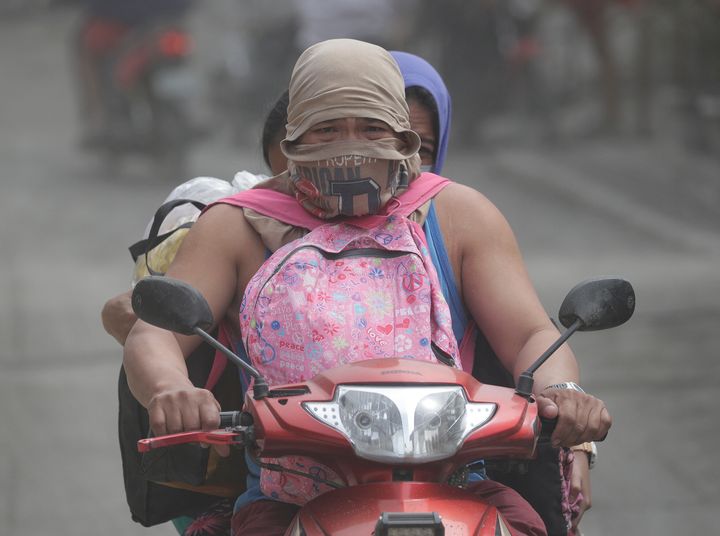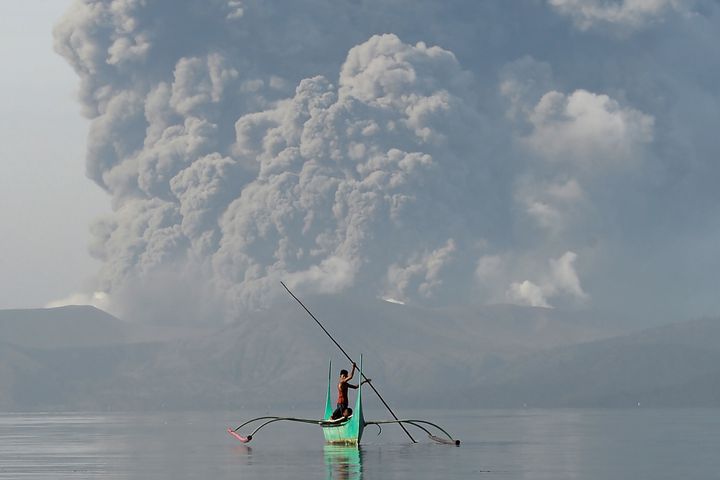Red-hot lava gushed out of a volcano near the Philippine capital as tens of thousands of people fled the area through heavy ash and frightening tremors.
Experts warned that the eruption of Taal – one of the world’s smallest active volcanoes – could get worse. With the volcano sitting on an island in the middle of a lake, there are also fears that the eruption could trigger a tsunami.
Over the weekend, the volcano spewed huge clouds of ash that reached Manila, around 45 miles away.
It meant that all flights into and out of the capital city’s international airport were suspended on Sunday night “due to volcanic ash in the vicinity of the airport”.

The government’s disaster-response agency and police said about 30,000 villagers had already moved to 38 evacuation centres in Batangas and Cavite, with the numbers expected to swell as more attempt to move out of harm’s way.
However, while some residents could not move out of ash-blanketed villages due to a lack of transport and poor visibility, officials said others refused to leave their homes and farms.
“We have a problem, our people are panicking due to the volcano because they want to save their livelihood, their pigs and herds of cows,” Wilson Maralit, the mayor of nearby Balete town, told DZMM radio.
“We’re trying to stop them from returning and warning that the volcano can explode again anytime and hit them.”

Taal had been restive for months until it suddenly rumbled back to life on Sunday, blasting steam, ash and pebbles six to nine miles into the sky, according to the Philippine Institute of Volcanology and Seismology.
The ash and steam column reached a height of around a mile on Monday, with lava fountains spurting less than half of that height before falling into lake waters surrounding the main crater.
Lava also spurted from another vent north of the main crater, Renato Solidum, who heads the institute, told reporters.
Frequent tremors and inflation of the 311-metre volcano indicate a major and much more dangerous eruption could still happen, he said.
The government volcano-monitoring agency raised the danger level around Taal three notches on Sunday, to level 4, indicating “a hazardous eruption within hours to days was possible”.
Level 5, the highest, means such an eruption is under way and could affect a larger area with high-risk zones that would need to be cleared of people.

It is difficult to say when Taal’s activity might settle, Solidum said, adding that the volcano’s last disastrous explosion occurred in 1965, when more than 200 people were killed.
Taal is among two dozen active volcanoes in the Philippines, which lies along the so-called Pacific Ring of Fire, a seismically active region that is prone to earthquakes and volcanic eruptions.
About 20 typhoons and other major storms each year also lash the Philippines, which lies between the Pacific and the South China Sea, making it one of the world’s most disaster-prone countries.
